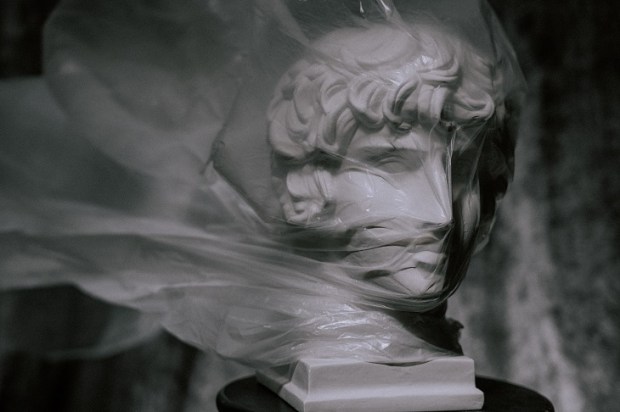Having emerged from the courtroom where Justice Michael Lee delivered his decision on the Lehrmann v Network Ten Pty Limited defamation trial, a senior lawyer representing one the defendants declared to the media and the public within earshot that Brittany Higgins was a ‘rape victim’ and that ‘His Honour has found that Bruce Lehrmann is a rapist’. He then repeated ‘Bruce Lehrmann is a rapist’ to emphasise the point.
It was somewhat sloppy as a public statement but the characterisation of Higgins and Lehrmann as ‘rape victim’ and ‘rapist’ was the core characterisation the lawyer was looking to convey. Regrettably, it is the core characterisation that sticks and on its own this does not reflect the truth.
The truth from the court is that Higgins is a ‘rape victim’ and Lehrmann is a ‘rapist’ in the opinion of Justice Lee. Others may beg to differ. Indeed, other judges may beg to differ.
In delivering his verdict, Justice Lee was very careful to state from the outset, ‘Only one man and one woman know the truth with certitude.’ That is to say, even Justice Lee does not know the truth in this matter. The judge is of the opinion rape did occur but the fact is, he is hedging his bet.
It is important at this point to make clear I carry no torch for either Higgins or Lehrmann. Their behaviour as explained in court was reprehensible and unbecoming of grown adults. It casts a dark cloud over all who work diligently in Parliament House and the mystery remains as to how either was ever employed to advise given their appalling lack of judgement and level of irresponsibility.
Further, whilst the following may appear critical of Justice Lee, I have tremendous respect for His Honour. It is not my intention to criticise him. He was, in my view, required in to decide the impossible for as he made clear, ‘Only one man and one woman know the truth with certitude.’ And he is not that man.
The key issue is whether in this circumstance, any decision based on the ‘balance of probabilities’ is going to deliver justice or deliver something less. Using Justice Lee’s decision in the defamation trial is not for the purpose of poking him in the eye but simply to examine how the balance of probabilities has worked in what is the most recent and topical case.
Quite recently three eminent and highly respected economists were asked to comment on the cash rate. Warren Hogan of Judo Bank was of the opinion there would be ‘two increases in the cash rate this year and maybe a third next year’. Saul Eslake saw it differently. He predicts a rate cut in February 2025. Chris Richardson said, ‘For me, the balance of probability is still for a rate cut in November.’ Three experts focusing on the same evidence with entirely different opinions on the outcome.
Every day of the year many, possibly millions of Australians take a punt at the races.
They have a number of variables from breeding to track conditions to jockeys and form to name just a few. The overwhelming majority get it wrong despite most thinking they are experts – so expertly they put their money on their judgement. Despite their expertise and experience in picking winners ‘on the balance of probabilities’, only 34 of 150 favourites have won the Melbourne Cup.
If expert economists get it wrong, if the punters get it wrong, could judges get it wrong making decisions on the balance of probabilities?
Of course they do. There would be no Courts of Appeal and there would be no innocents rotting in prison if judges got it right all the time. We know judges can and do get it wrong from time to time.
Justice Lee was very smart to hedge his bet.
Following the judgement that emerged from the recent defamation trial, it has been reported that, ‘Ten (the Defendant) successfully made out its truth defence and proved, on the balance of probabilities, that Mr Lehrmann raped Miss Higgins.’ With respect, Ten didn’t prove anything. They laid out their version of events and relied on Justice Lee accepting that version.
Justice Lee was meticulous in setting out the legal definition and relevant precedent to be applied where deciding something on the balance of probabilities but here are the issues.
- Who determines the probabilities?
- Who decides the balance?
- Where is objectivity overtaken by subjectivity?
- Whereas Justice Lee mentioned regularly both in proceedings and in his comprehensive decision that speculation was unhelpful and to be avoided; the fact is his decision on rape, for all of his balancing of probabilities, could only be speculation.
The question is – given the same evidence and examination – would all judges come to the same conclusion as Judge Lee?
Any reading of the judgement on the issue of whether rape occurred or not, will have raised questions across the community. There are several probabilities as to what really happened on that fateful night. Rape. Consensual sex. Sex with a consequent change of heart. Nothing sexual at all. Such is the forensic analysis it is easy to conclude Justice Lee must be right. It is just as easy from reading the judgement to determine the bearing of the writer. For the judgement goes many places that one may think odd or irrelevant.
As an example, there is a curious finding about the lies both Lehrmann and Higgins were found to be telling. Justice Lee found that, ‘There is a significant difference between the distortions of Mr Lehrmann and Ms Higgins. In the case of Mr Lehrmann, the untruths were all over the shop (being a form of what might be called ‘disorganised lying’); whereas the untruths of Ms Higgins: (a) can be placed in two temporal categories; (b) were, in the latter category, quite organised; and (c) within both categories, generally had a common thread.’
Another might conclude that Lehrmann’s lies were very focused. On the contrary, another might conclude Higgins’ lies were ‘all over the shop’ as if delivered from a blunderbuss.
Lehrmann’s lies were only about his intentions and his behaviour with the sole purpose of defending himself against the allegation of rape. His only target was Miss Higgins.
Conversely, Higgins’ lies were about what Lehrmann did, what Senator Reynolds did, what Fiona Brown did, and so it goes on. His Honour found she lied to the AFP, the media, and the politicians and officials who were determining her compensation. The lie that there was government-led conspiracy depended entirely on proving rape occurred. Had consensual sex occurred in the Minister’s suite, or no sex had occurred at all, the conspiracy claim would never have seen the light of day.
That these lies were to seriously damage many reputations and careers was seemingly incidental. ‘Disorganised’ or ‘organised’? This depends on your point of view.
Lehrmann lost ‘credit’ in the mind of Justice Lee for being a ‘cad’ – defined as ‘a derogatory term used by students at British universities, referring to boys from local towns’. There is a hint about the bearing of the judge right there.
His Honour was scathing about Lehrmann. ‘There is no record of Lehrmann telling his girlfriend of his plans.’ Lehrmann ‘was a man who had already acted unfaithfully towards his girlfriend by the standards of right-thinking people and had no scruples about doing so again that evening’. Comments about Lehrmann being ‘unfaithful’ and a ‘cheat’ are sprinkled throughout the judgement.
Yet there was no such condemnation of Miss Higgins who not only was in an established relationship with her partner (left at home), but who took another poor bloke out on the evening only to ‘forsake him like a shag on a rock’ after a couple of hours when more fun beckoned with Lehrmann et al.
Lehrmann was also judged harshly for events which occurred in the weeks leading up to the fateful night. One could easily wonder what relevance these events were to the ‘truth defence’ unless one was looking to construct a narrative. Apparently, Lehrmann described Higgins as ‘good looking’. He even put her name forward for consideration for an upcoming job. Is this the conduct of a ‘cad’?
Reviewing these early exchanges, Justice Lee was ‘satisfied Mr Lehrmann was taken with Miss Higgins from the outset’. Yet Higgins complained that Lehrmann was delegating to her ‘particularly annoying’ tasks in the office. Odd treatment of someone who may be looking to one day seduce Higgins.
Higgins invited Lehrmann to the event at The Dock, yet Lehrmann did not arrive until more than an hour after Higgins, and in the company of a colleague with whom he had preferred to socialise for the past hour or so. Is this the conduct of one ‘taken with Miss Higgins from the outset’?
The inference in evidence given to the court was that Lehrmann was the one who led Miss Higgins to the point of inebriation, yet the findings of His Honour was that Lehrmann provided Higgins with just two drinks over a period of four to five hours – less than Higgins provided for herself and no more than the abandoned ‘shag on a rock’ provided for Higgins. Is not this no more or less the conduct of anyone out for the night with a group of friends? And was it not the evidence of Higgins that her intention for the night was to ‘get drunk’?
Lehrmann went down in the estimation of Justice Lee for not taking responsibility for Higgins on the night as if it is always for the male to take control when out with any lady. This harks back to the Age of Chivalry. Higgins is an adult. Higgins was Lehrmann’s host. Higgins acted on her own initiative which in today’s world is what any thinking woman should do.
It is easy to contest any number of findings in the judgement but as indicated at the outset, one should not be critical of Justice Lee. He was persuaded by events and evidence that may not persuade others.
His Honour was merely expressing his opinion.
But anyone with a different upbringing, different life experience, different bearing could easily be persuaded rape did not occur.
The same set of circumstances, seen through different lenses, will come to a variety of conclusions. Just as it does for the economist or the punter.
Accordingly, the balance of probabilities can be an imprecise approach to justice. In this case the stakes were high, very high. One party has ended up starting a new life on the other side of the world. The reputation, prospects and financial future of the other party has been destroyed by this judgment.
It seems to me where any judicial decision is to be based on the balance of probabilities the most important consideration is as much who is presiding as it is the evidence that is being presided over.

























